Gambel's Quail
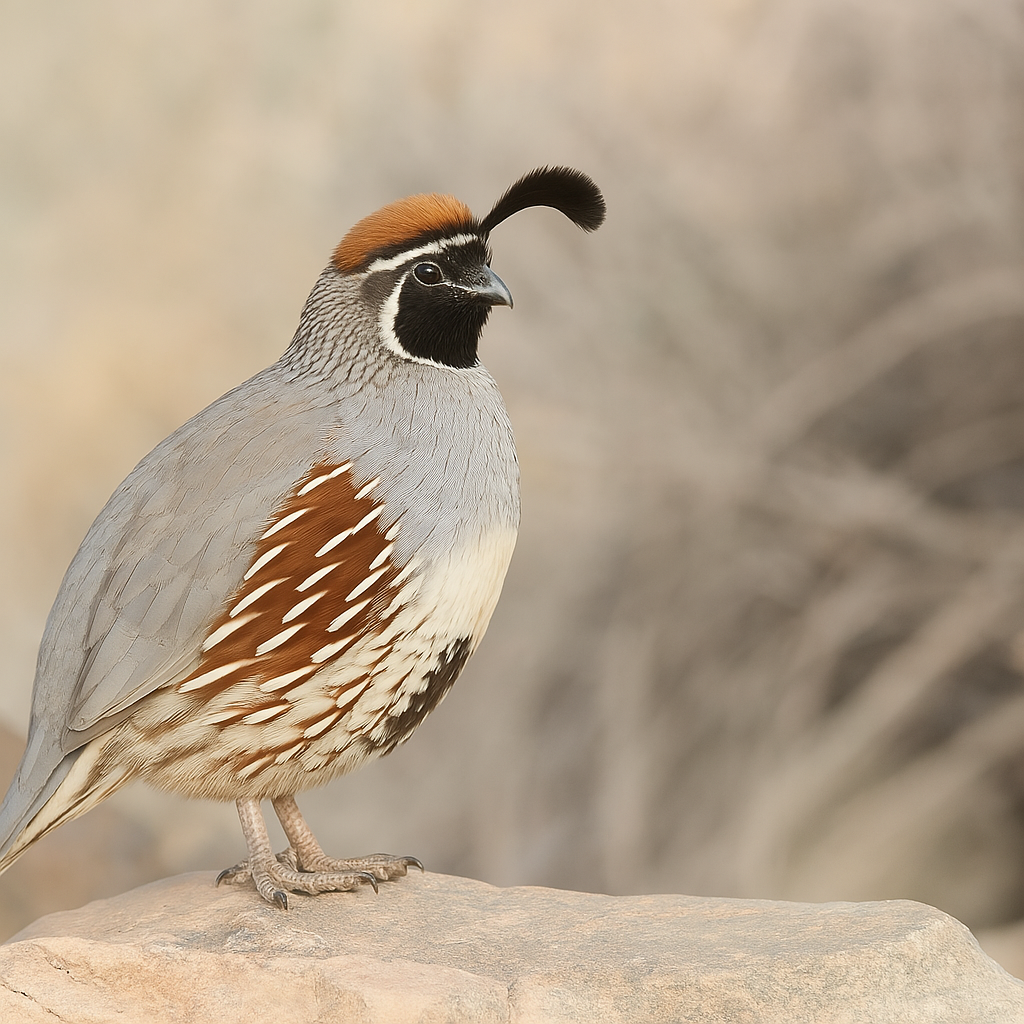
Lifespan
3-5 years
Height
15-18 cm
Length
25-30 cm
Quail Ratio
1 Male to 3-4 Females
Gambel's quail are social birds native to the southwestern U.S. and Mexico. Known for their striking black face and chestnut crown, they thrive in spacious, secure enclosures. Their diet includes high-protein game bird feed, seeds, grains, and fresh vegetables. They do best in pairs or small groups and can live up to 3-5 years with proper care.
Gambel’s Quail Call (Male Call)
Physical Characteristics
How many females to a male
This ratio mirrors their natural covey structure, reducing male rivalry and ensuring that females are not over-mated, which promotes a peaceful and productive breeding environment.
Size
Gambel's quail (Callipepla gambelii) typically measure about 25-30 cm (10-12 inches) in length from beak to tail. When standing, they are approximately 15-18 cm (6-7 inches) tall.
Appearance
Their striking plumage and charming behaviors make them interesting pets. Males have a striking black face and throat with a white border, a chestnut crown, and a plume of black feathers curving forward over their head. Females are more muted in color with a brownish-gray plumage and a smaller, less prominent head plume.
Lifespan
In the wild, Gambel's quail have a lifespan of about 1-2 years due to predation and environmental challenges. In captivity, with proper care, they can live up to 3-5 years.
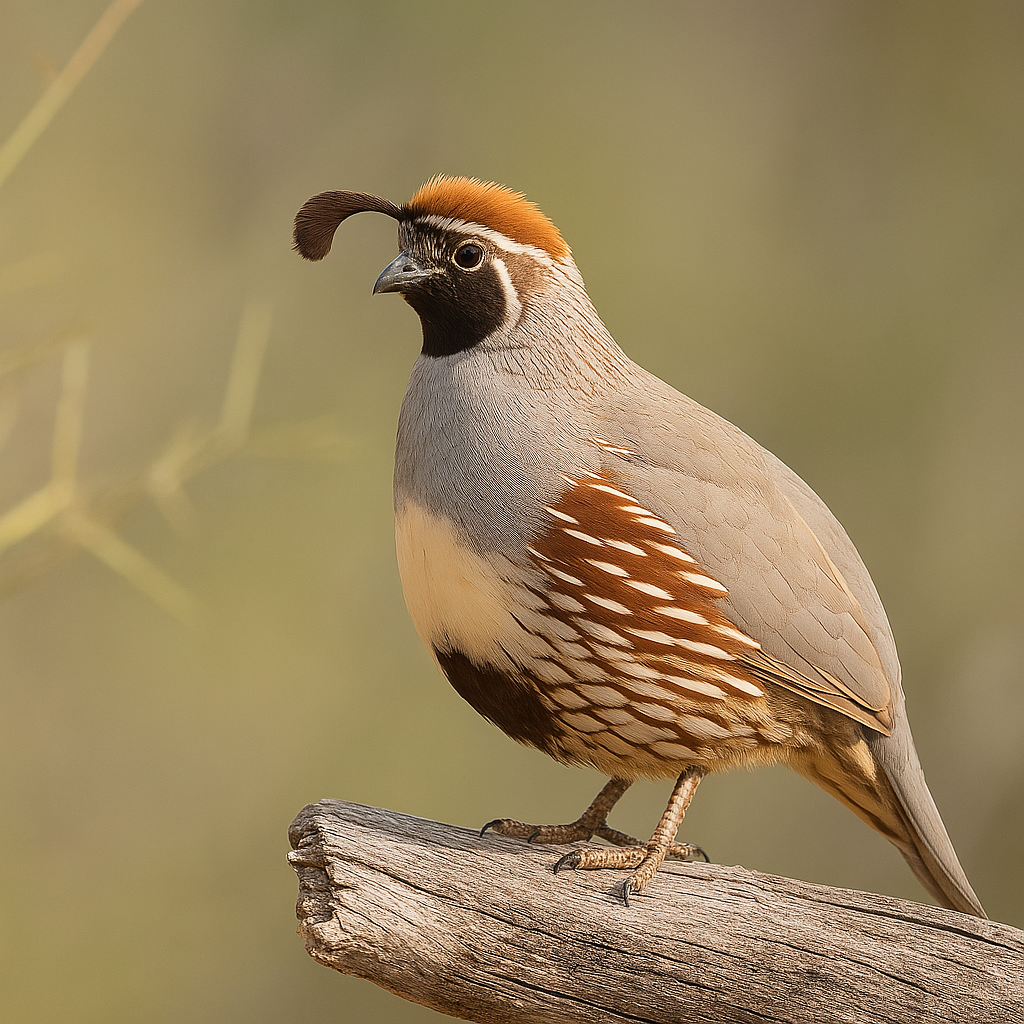
Habitat
Size of habitat
Provide a spacious, secure enclosure with at least 1 square meter (10.8 square feet) per pair. An aviary is ideal to give them ample space to roam and fly.
Substrate
Use soft bedding material such as straw, hay, or wood shavings to provide comfort and facilitate natural behaviors like scratching and dust bathing.
Shelter
Ensure the enclosure has sheltered areas to protect them from harsh weather and give them a sense of security.
Dust Bathing
Provide a container of sand or fine dust for dust bathing, which helps keep their feathers clean and free of parasites.
Protection
Make sure the enclosure is predator-proof and has a solid roof to prevent escape and protect from predators.
Diet
Food
Use high-quality commercial quail feed with 20-24% protein content. Supplement their diet with seeds and grains such as millet, cracked corn, and sunflower seeds. Offer fresh greens like lettuce, spinach, and other leafy vegetables.
Protein
Occasionally provide mealworms, insects, or boiled eggs for additional protein.
Water
Fresh, clean water should be available at all times

Social Behavior
Gambel's quail are social birds and should be kept in pairs or small groups. They establish a social hierarchy within their group, which can lead to minor squabbles. Monitor for serious aggression.
Activity
They are active birds that enjoy foraging, dust bathing, and exploring their environment. Provide enrichment like hiding spots and items to peck at and investigate.
Handling
Gambel's quail are skittish and can be easily startled, so handling them requires a gentle approach. Move slowly and calmly to avoid scaring them. Gently cup their body with both hands, supporting their chest and back. Keep handling sessions brief to minimize stress.
Spend time near their enclosure to help them get used to your presence and voice. Regular, gentle handling can help them become accustomed to human contact.
Health
Clean Environment
Regularly clean the enclosure, food, and water containers to prevent bacterial growth and infections.
Health Monitoring
Watch for signs of illness such as lethargy, changes in eating habits, or abnormal droppings. Consult an avian veterinarian if needed.
History
Gambel's quail are native to the arid desert regions of the southwestern U.S., including Arizona, New Mexico, Texas, and California, as well as parts of northern Mexico. They thrive in desert scrublands, brushy foothills, and river valleys, where they find ample cover and food.
Named after William Gambel
The species was named in honor of William Gambel, an American naturalist who explored the southwestern U.S. in the mid-19th century. Gambel documented the quail during his expeditions, leading to their scientific classification in the early 1840s.
Modern Day
Today, Gambel's quail are common in their native range and are not considered threatened. Conservation efforts focus on maintaining their natural habitats and managing populations sustainably.
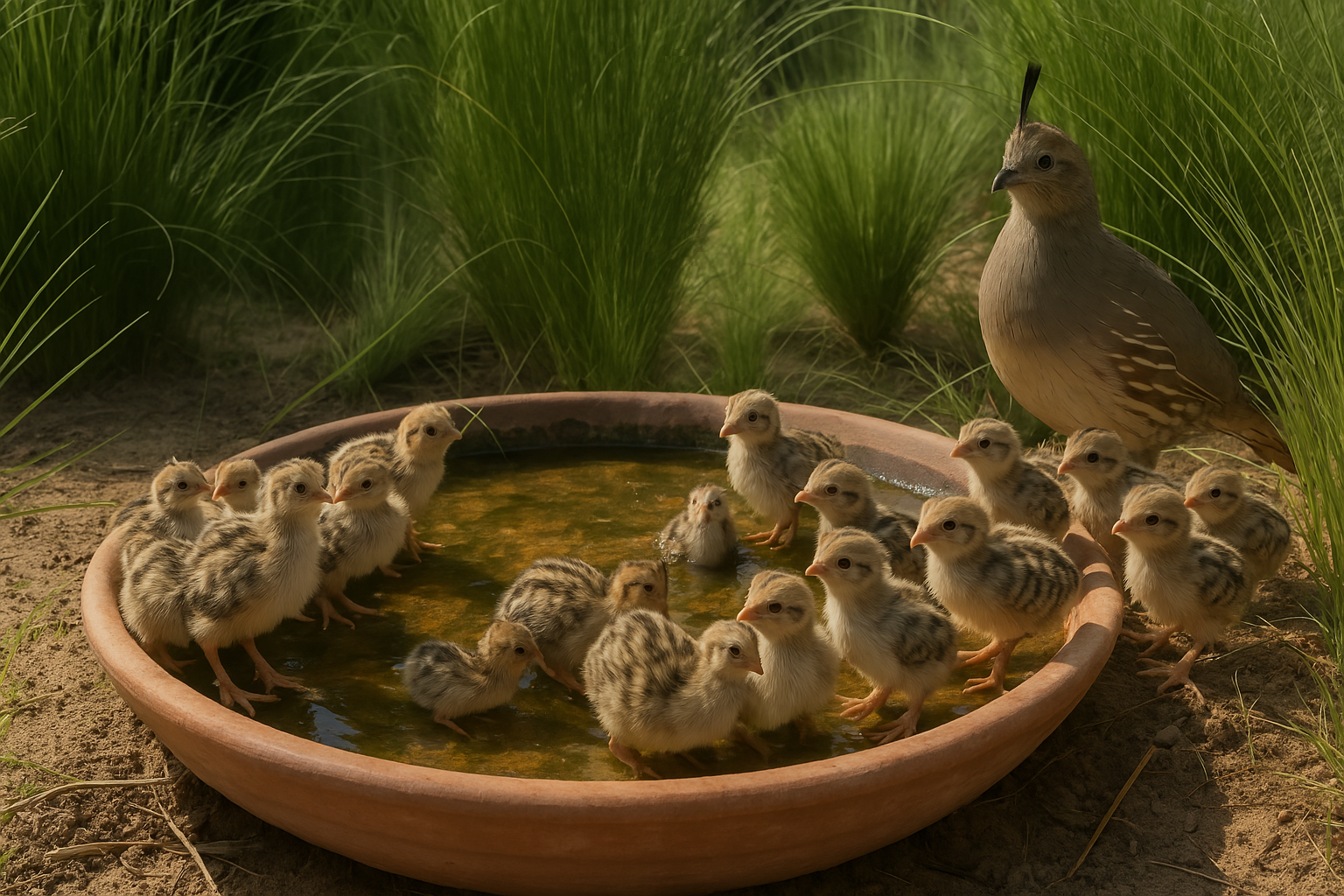
Breeding
Breeding Season
Gambel's quail typically breed in the spring, with the season starting as early as March and extending into June. The timing can vary depending on the local climate, with breeding beginning earlier in warmer regions.
Nesting
Females create nests on the ground, usually in a well-hidden spot under shrubs or grass. The nests are simple depressions lined with grass, leaves, and feathers. A typical clutch contains 10-15 eggs, which the female incubates for about 21-23 days.
Quail Chick Care
Brooder Setup
Temperature: Provide a heat lamp or ceramic heat emitter to keep the brooder warm. The temperature should be kept at about 95°F (35°C) for the first week, then gradually reduced by 5°F (3°C) each week until the chicks are fully feathered and can regulate their own temperature.
Feeding
Provide a high-protein game bird starter feed with at least 24-28% protein. This feed is crucial for the rapid growth and development of the chicks.
Feeder and Waterer
Use shallow feeders and waterers to prevent chicks from drowning. Marbles or pebbles can be placed in water dishes to keep chicks safe.
Outdoor Transition
Chicks should be fully feathered before transitioning outdoors, usually around 6-8 weeks of age. This ensures they can regulate their body temperature and are better protected against the elements.
Joining the adults
Integration with Adults
Chicks should be at least 6-8 weeks old before joining the adults. They should be fully feathered and able to regulate their body temperature.
Observe Behavior
Watch for signs of aggression or bullying from the adults. If the chicks are significantly smaller or weaker, they may need more time before integration.

Fun Fact
Gambel's quail are one of the few bird species that have a distinctive "topknot" of feathers on their heads, which they can move and adjust. This quirky feather plume, which looks like a small crest, helps them stand out and is particularly prominent in males.
In this article

Eggs
Gambel’s quail eggs are small and oval, typically weighing around 9-12 grams. Their shells are cream-colored with distinctive brown speckling, giving them a beautiful, natural camouflaged appearance. These eggs are slightly smaller than domestic quail eggs and are well-suited for incubation or as ornamental additions due to their unique patterning. Their compact size and speckled design blend perfectly with the quail's desert habitat.
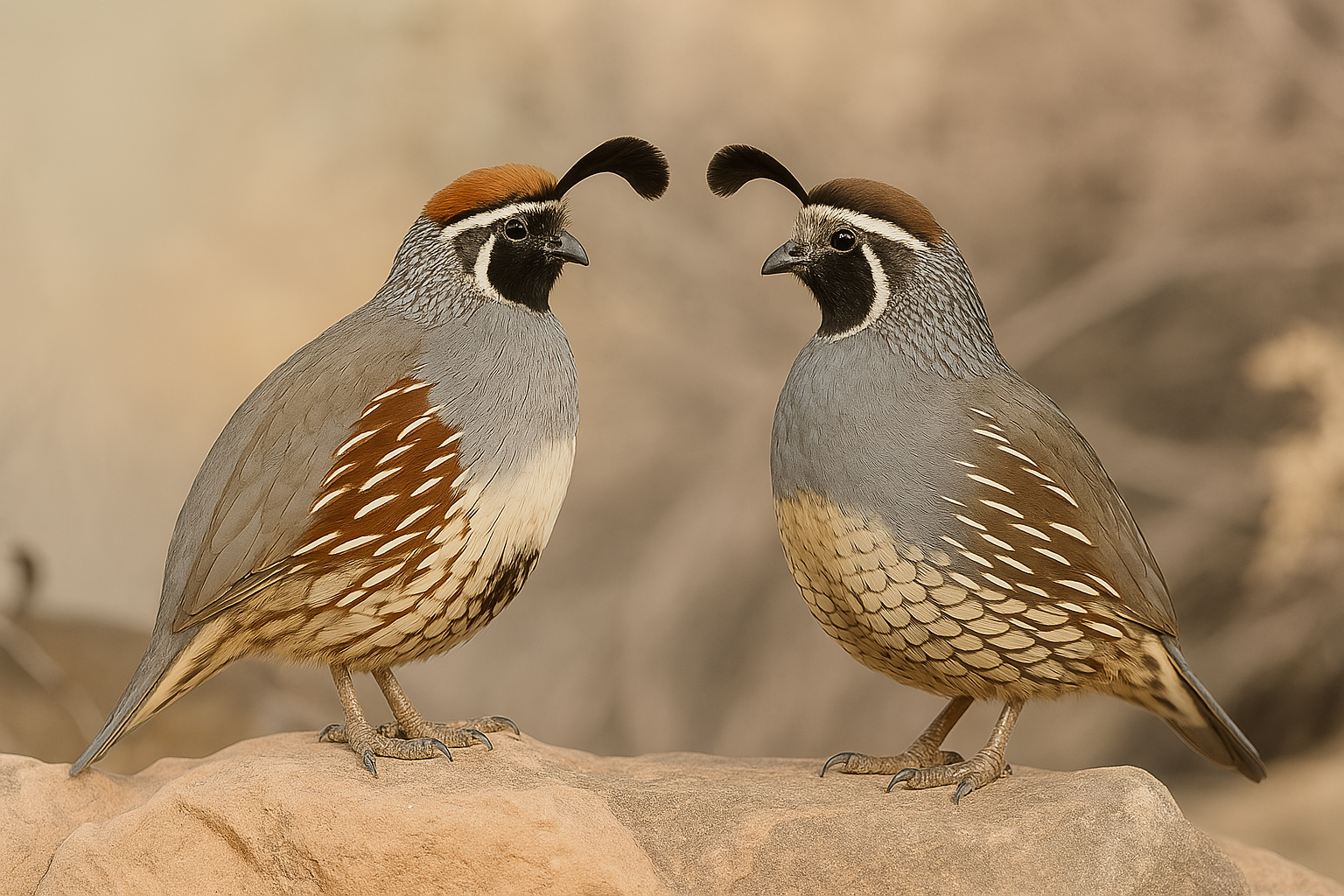
California Quail vs Gambel’s Quail
Head plume
Both have a forward-curving black plume, but California Quail's is shorter and more compact, while Gambel’s Quail has a longer, more curved one.
Belly
California Quail has a scaled or mottled belly. Gambel’s Quail has a creamy belly with a bold black patch in the center.
Flanks (sides)
California Quail has chestnut-colored flanks with white streaks. Gambel’s Quail also has streaked flanks, but they are lighter and not as rich in color.
Face pattern
California Quail has softer, more delicate white markings. Gambel’s Quail has a bold black face with sharp white outlines — more high contrast.
Top of the head
California Quail has a brown cap. Gambel’s Quail has a reddish-brown cap.
Where they live
California Quail live along the West Coast — California, Oregon, Washington, even parts of British Columbia. Gambel’s Quail are found in the desert Southwest — Arizona, New Mexico, Texas, Nevada.
Behavior
Both live in groups (coveys) and walk on the ground a lot. California Quail are more likely to be seen in suburban gardens and chaparral, while Gambel’s Quail prefer dry, open desert areas with cactus and mesquite.
Legal Considerations
Check local laws and regulations regarding the keeping of quail. Some areas may have specific requirements or restrictions.
Permits
In some regions, permits may be required to keep or breed quail.

Montezuma Quail
Montezuma Quail, native to Mexico and the southwestern US, are prized for their unique, camouflaged plumage and subtle crest. These naturally shy and solitary birds are challenging to breed in captivity, and while they require careful health monitoring, their distinctive beauty appeals to experienced aviculturists.
Read more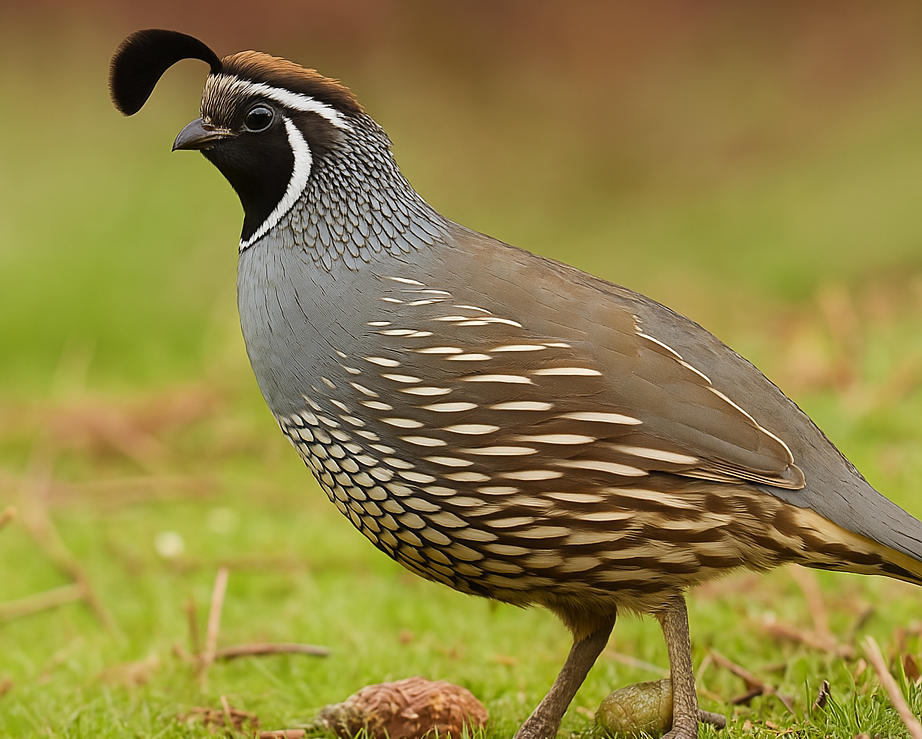
California Quail
The California Quail (Callipepla californica) is a charming and distinctive bird known for its plump body, beautiful plumage, and characteristic head plume, often referred to as a "topknot." These birds are native to the western United States but can be kept as pets with proper care and attention. Here's a comprehensive look at keeping California Quail as pets
Read more
Jumbo Celadon Quail
Jumbo Celadon Quail, also known as Coturnix quail, are a popular breed among poultry enthusiasts due to their distinctive blue or light green eggs, larger size, and efficient egg production. They are a selectively bred variety of the standard Coturnix quail, known for their increased body weight and unique egg coloration.
Read more
Bobwhite Quail
The Bobwhite Quail, also known as the Northern Bobwhite or Virginia Quail (Colinus virginianus), known for their distinctive call and charming appearance, can make unique and interesting pets. Bobwhite quail Have long been popular in North America. They require specific care and habitat conditions to thrive in a domestic setting.
Read more